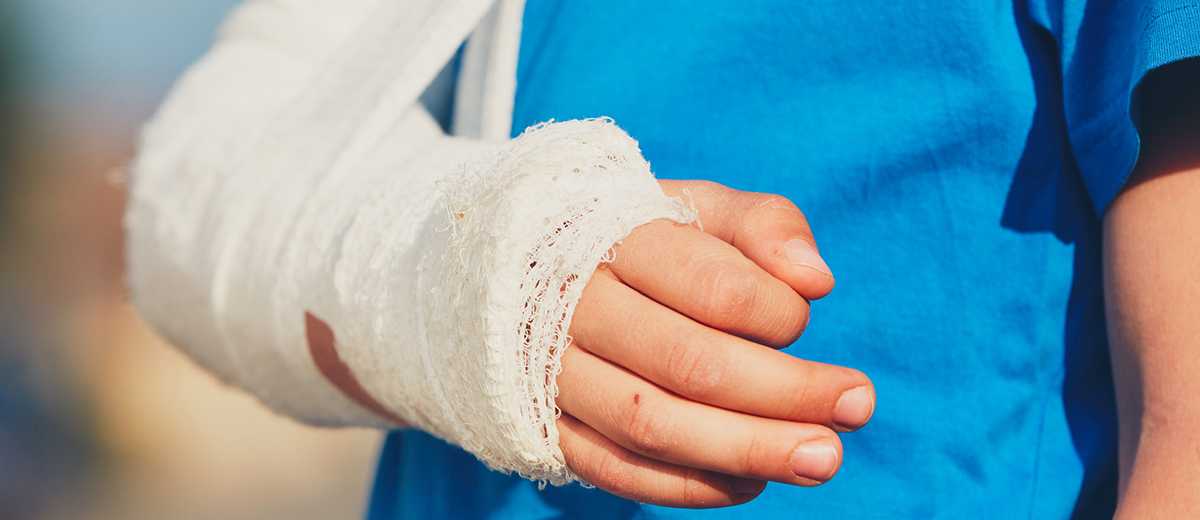If a child breaks an arm, jams a finger, or fractures a wrist, do you have the proper tools to treat it? Depending on the injury, a sling or splint is the most common device used to stabilize a break or a fracture. Stabilization of the injury is key, because it reduces pain and helps prevent further damage.
According to MedlinePlus, a sling is a device used to support and keep still (immobilize) an injured part of the body. They are most often used when you have a broken (fractured) or dislocated arm or shoulder.
A splint is a device used for holding a part of the body stable to decrease pain and prevent further injury.
Here are 5 tips to keep in mind if you’re treating an injury with a sling or a splint:
- Treat the wound before applying a sling or splint. Stop any bleeding, clean the injury, apply pressure and elevate the body part. Apply ice consistently throughout the process to help reduce swelling. Click here to shop ice packs.
- Never attempt to realign the broken body part, unless it is a more serious injury and you cannot find a pulse.
- Loosen the splint if the student experiences numbness or tingling or the area becomes cool to the touch or turns blue.
- Seek immediate medical care after applying the sling or splint.
- Keep calm. The student will likely be in pain and be scared or in shock. Encourage the student to relax and make them as comfortable as possible.
To shop MacGill’s selection of slings and splints, click here. If you have any questions, please don’t hesitate to contact us.





